10 Revolutionary Rebellions That Altered Human History
Rebellions often start with a deep sense of injustice—a feeling that the way things are just isn’t right. Whether they take the form of peaceful protests, like Mahatma Gandhi’s movement in India, or erupt into violent uprisings, like the American and French Revolutions, the goal is usually the same: to challenge the powers that be and demand change. Sometimes, that means pushing for reforms. Other times, it means tearing down the existing system entirely.
Not all rebellions succeed, of course. Many fizzle out or only manage to make a small dent in the status quo. But every now and then, a revolt comes along that shakes the world to its core. These are the uprisings that topple empires, rewrite history, and leave a lasting mark on humanity. Below, we’ll dive into ten such rebellions that did exactly that—revolutions so powerful they changed the course of history forever. From ancient times to the modern era, these stories remind us that when people rise up together, even the mightiest powers can fall. So, buckle up—this is history at its most dramatic and transformative!
10.Revolt of Babylon (626 BC)
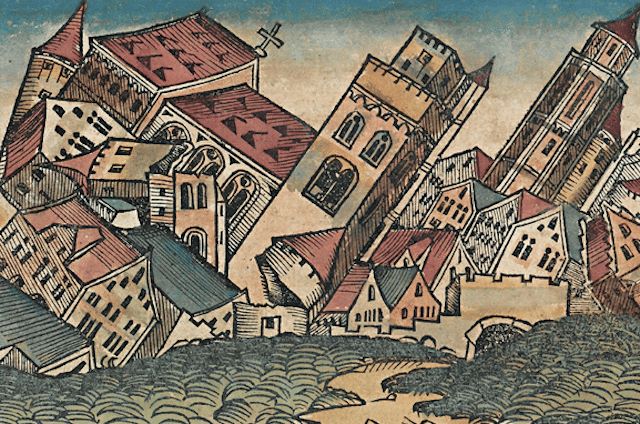
For nearly 300 years, the Neo-Assyrian Empire dominated the ancient world with unmatched power and brutality. They were pioneers in warfare, being the first civilization to wield iron weapons, which gave them a massive edge over their enemies. This technological advantage helped them build the largest empire and strongest military force the world had ever seen—at least for a while. But even the mightiest empires have their limits, and the Assyrians were no exception.
After conquering Babylon in 729 BC, the Assyrians found themselves constantly battling rebellions. The Babylonians, led by a clever Chaldean general named Nabopolassar, saw their chance during a brief civil war in 626 BC. They rose up, seized the cities of Babylon and Nippur, and managed to fend off an Assyrian counterattack. Nabopolassar was crowned King of Babylon, but the fight was far from over. The conflict dragged on for nearly 20 years, with the Assyrians slowly gaining ground by 622 BC. Just when it seemed like they might crush the rebellion, another uprising erupted in the western part of their empire. This gave Nabopolassar the breathing room he needed to solidify his control over the entire Babylonian Kingdom by 620 BC.
Despite receiving support from Egypt, the Assyrians couldn’t hold back the waves of threats closing in on them. Nomadic tribes raided from the north, the Iranians pressed from the east, and the Babylonians advanced from the south. By 609 BC, the once-unstoppable Neo-Assyrian Empire crumbled, making way for the rise of the Neo-Babylonian (or Chaldean) Empire. It’s a classic tale of how even the most powerful rulers can fall when faced with relentless pressure from all sides. The Assyrians’ iron grip on the world slipped away, proving that no empire, no matter how strong, is invincible.
9.Roman Revolution (510–509 BC)

Even though Rome was among the most important political entities of its time, and certainly in Europe, its early history is rather shrouded in mystery. In fact, recorded history in Rome didn’t start until the 3rd century BC, after it conquered the Italian Peninsula and was already involved in a significant war with Carthage. Anything that came before was mainly comprised of short stories and brief facts. Over the centuries, historic reinterpretations, exaggerations, and suppressions of the truth were introduced to fill in the blanks and create a more flattering narrative. The period surrounding Rome’s transition from a Monarchy to a Republic is no exception.
The story goes that, before the Roman Republic, there were a total of seven kings starting with Romulus who founded the city in around 753 BC. The first six kings were said to have been quite benevolent, but the last one, Lucius Tarquinius Superbus (Tarquin for short) was not. He supposedly killed the previous king and established a despotic rule, also murdering many senators in the process. His byname Superbus (the proud) originated from his reign of terror.
After his son, Sextus raped a noblewoman, her family, other nobles, and even the king’s nephew, Lucius Junius Brutus, organized a political coup d’etat in 509 BC. They exiled the Tarquin family and created the republic by appointing two consuls elected every year instead of a single king to rule for life. This story was also cited centuries later to convince Marcus Junius Brutus (Lucius’ descendant) to organize Caesar’s assassination in 44 BC.
Modern scholars, however, believe the actual events revolved more around the Etruscans defeating the Romans in battle and expelling King Tarquin. But before they could install themselves on the Roman throne, the Etruscans were forced to retreat, leaving Rome without a king. And instead of installing a new one, the Romans created the Republic.
8.Athenian Revolution (508–507 BC)
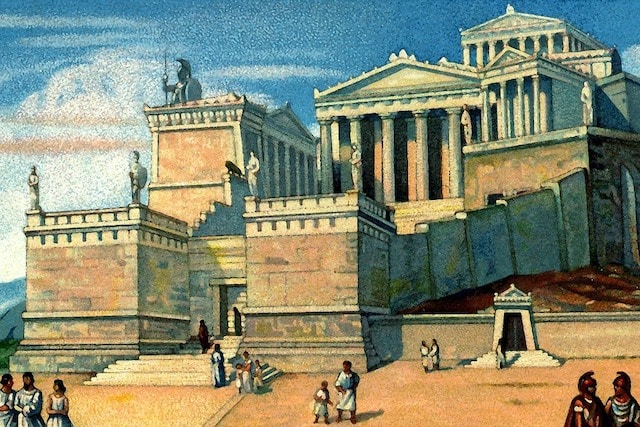
In the early years of the 6th century BC, Solon – also considered one of the Seven Wise Men of Greece – issued significant reforms that laid the foundations for Athenian democracy. He created the Boule (a 400-men council with representatives from the four main tribes of Athens) as well as the Ecclesia (an assembly of all male citizens regardless of social class). These changes brought stability to the city-state and even made it possible for Athens to rule itself without the need for an Archon (ruler); basically in a form of political anarchy.
However, this newly founded democracy was not without its shortcomings and, by extension, not immune to the threat of tyranny. An aristocrat by the name of Pisistratus organized a populist coup and became the Tyrant of Athens until his death in 527 BC. He was followed by his son Hippias. And although Athens prospered under Hippias’ rule, he became increasingly tyrannical after his brother’s assassination. The increased instability made it possible for Sparta under King Cleomenes I to invade and conquer the city in 510 BC. He drove Hippias out and installed Isagoras, an Athenian noble, friends with the Spartan king.
Isagoras exiled many who opposed him and sought to dissolve the Boule. But in doing so, he quickly found himself at odds with the Athenian middle and lower classes, who wanted a return to democracy. Not long after, the Athenian people revolted and forced Isagoras, Cleomenes, and their supporters to flee on the Acropolis where they were besieged for two days. Cleomenes and Isagoras were allowed to leave on the third day, but 300 of their supporters were killed.
Cleisthenes, who was a staunch opponent of Isagoras, was recalled from exile and began institutionalizing the democratic revolution. Among his many reforms, he expanded the Boule, established the system of sortition (randomly choosing citizens to fill government positions instead of heredity or kinship), and introduced ostracism (exiling citizens for 10 years who would be deemed by vote to be a danger to democracy).
7.Liu Bang’s Insurrection (206 BC)
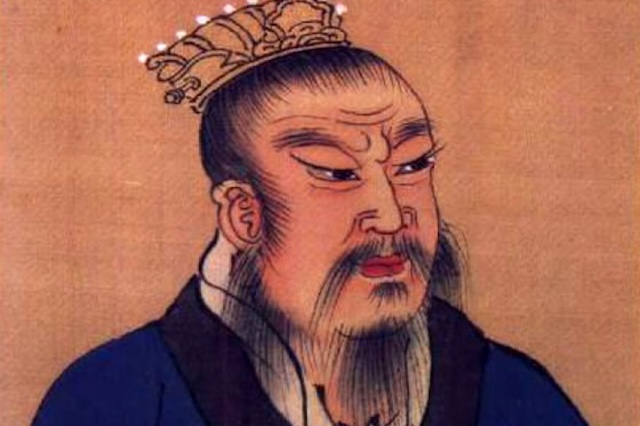
According to the British historian Arnold Toynbee, “The two most far-sighted and influential political figures in the history of mankind are Caesar, who founded the Roman Empire, and Liu Bang, who founded the Han Empire.”
Liu Bang was one of the very few in Chinese history to go from a mere peasant to a mighty Emperor. He was born and raised in a small fishing village on the eastern coast of China in present-day Jiangsu province. Not much is known about his early life, but by his late twenties he became a local law enforcement officer, and by his 40s, a popular local political figure. With the death of Emperor Shihuangdi of the Qin Dynasty (who was the first to unify China) in 210 BC, the Empire descended into political chaos, and Liu Bang turned rebel.
The insurgents, including Liu Bang, were under the nominal leadership of Xiang Yu, an aristocrat, and a brilliant military strategist, but lacking in political savviness. By contrast, Liu Bang was a crude man who once urinated in the formal hat of a court scholar to show his disdain for education. He was, however, very popular with the masses. Together with other rebel leaders, they managed to defeat the Qin armies, kill the new emperor, and reinstate the pre-Qin feudal system. Liu Bang became the ruler of the kingdom of Han.
This new arrangement was not to last, however, as the old rebel allies began to fight among themselves. In the ensuing civil war, Liu Bang emerged victorious against Xiang Yu at the Battle of Gaixia in 202 BC. The latter committed suicide to avoid capture. Left without a rival, Liu Bang proclaimed himself Emperor, under the name Gaozu, and founded the Han dynasty.
6.Maccabean Revolt (167–141 BC)
Although initially under the influence of the Ptolemaic dynasty ruling from Egypt and mainly left to its own devices, Judaea fell under the influence of the Seleucid Empire in 198 BC. Under Antiochus the Great, the Seleucids began an empire-wide campaign of Hellenization, which didn’t go well with many non-Greeks. The process was continued under Antiochus IV Epiphanes, who also launched a repression campaign, specifically aimed against the Jews in 168 BC.
Why he focused particularly on the Jewish religion is unclear, but all Jewish practices were banned and Jerusalem was placed under the direct control of the Seleucids. This sparked a revolt in 167 BC, led by Judah Maccabee. The rebel forces would be known as the Maccabees. The initial rebellion started small, raiding small towns and attacking Greek officials wherever they could. But it would soon balloon in size, allowing them to even take Jerusalem in 164 BC. The Jewish festival of Hanukkah is based on retaking the city and rededicating the altar of the Second Temple at this time.
Looking for a more diplomatic approach, the Seleucids unbanned Judaism but some of the more radical militants continued the fight, hoping for complete independence. This forced the Greeks to send a sizable force into Judaea. At the Battle of Elasa in 160 BC, the Maccabees were soundly defeated, Judah Maccabee was killed, and the Seleucids retook direct control of the region. The Maccabees would not relent, however, and led a resistance under Judah’s brother Jonathan.
This would last for nearly two decades but due to internal struggles within the Seleucid Empire, the Jews now under Simon Thassi (younger brother to Judah and Jonathan) were able to retake Jerusalem in 141 BC. They also formed an alliance with the Romans that helped them achieve independence under their own Hasmonean dynasty.
5.Heraclian Revolt (608-610 AD)
The reign of Emperor Phocas, which lasted from 602 to 610 AD, is often remembered as one of the darkest chapters in Byzantine history. A centurion of humble beginnings, Phocas initially arrived at Emperor Maurice’s court as a representative for discontented soldiers. But when a mutiny erupted in Constantinople, Phocas seized the moment. He overthrew Maurice, executed him and his five sons, and declared himself emperor on the very same day in 602 AD. A few years later, he went even further, ordering the deaths of Maurice’s wife and daughters. It was a brutal start to a brutal reign.
Phocas’s rule was marked by paranoia and violence. Seen as a usurper, he launched a ruthless campaign to eliminate political rivals, root out conspiracies, and place his own family in positions of power. But his harsh tactics did little to stabilize the empire. To the west, the Lombards were relentlessly attacking Byzantine Italy. In the Balkans, the Avars and Slavs were raiding deep into imperial territory. Meanwhile, the Sasanian Empire to the east saw an opportunity and launched a full-scale invasion in 603 AD. By 607, they had conquered Mesopotamia, Syria, and much of Asia Minor, pushing all the way to the Bosphorus Strait. The Byzantine Empire was crumbling under the weight of external threats and internal chaos.
Amid this turmoil, the Heraclii family saw their chance. Ruling over the Exarchate of Africa, a Byzantine province, Heraclius the Elder decided to act. He cut off the grain supply to Constantinople, a move that struck at the heart of Phocas’s power. Together with his son, Heraclius the Younger, they gathered an army and a formidable navy. With support from Egypt and other Mediterranean provinces, they marched on the capital. In 610 AD, they successfully overthrew Phocas, ending his disastrous reign and establishing the Heraclian dynasty. It was a dramatic turning point for the Byzantine Empire, proving that even the most oppressive rulers can be toppled when the right forces align.
4.Abbasid Revolution (747-750 AD)
The Abbasid Revolution saw the overthrow of the Umayyad Caliphate and the rise of the Abbasid Caliphate, which lasted until 1517 AD. The Umayyad Caliphate (661–750 AD) was an Arab empire that ruled over mostly non-Arab people. Throughout its existence, the Umayyads treated all non-Arabs as second-class citizens, regardless of whether they converted to Islam or not.
The Abbasid revolution saw support from people of diverse backgrounds and all levels of society. Though mostly comprised of Muslims of non-Arab descent, the rebellion was facilitated by both Sunni and Shia Muslims, non-Muslims, and even many Arab Muslims who saw the Umayyad’s centralized power as an encroachment into their nomadic lifestyle. Considered one of the most well-organized revolutions of its time, the movement began in Persia in 747 AD. By 749, it had moved westward into present-day Iraq, where it saw immediate support from the local population.
Everything culminated at the Battle of Zab in mid-January 750, when the two powers faced off across the Great Zab River in prest-day northeastern Iraq. Although vastly inferior, the Abbasid army emerged victorious and was able to march onto the Umayyad capital of Damascus, conquering it in April of that year. Caliph Marwan II of the Umayyads and his family were tracked down and killed in Egypt, while Abu al-Abbas al-Saffah was made the new Caliph of the Abbasids.
The capital was moved to Baghdad in 762 (which was a backwater village at the time). This eastward reorientation gave the new Caliphate greater Persian influence. The Abbasids also granted non-Arab Muslims equal social and spiritual rights with Arabs, ushering in the great cultural and scientific period known as the Islamic Golden Age.
3.The Great Slav Rising of 983 AD
The Great Slav Uprising of 983 AD was a revolt of several Slavic tribes living in present-day northeastern Germany against the Holy Roman Empire. The tribes living between the Elbe River and the Baltic Coast such as the Polabian Slavs, Lutici, and Wends, among others, were conquered by the German kings Henry the Fowler and Otto I.
To consolidate his rule, Otto I initiated a campaign of Christianizing these tribes by establishing several bishoprics in their lands. The Slavs rebelled several times over the decades, especially in 955, when they were defeated at the Battle of Raxa. And although they were forced to Christianize, they reverted to their pagan religion every time.
With Otto II‘s military defeat in Italy and his unexpected death of malaria in Rome in early 983 AD, the Holy Roman Empire was inherited by his infant son Otto III. The Slavs took advantage of the internal dissension that ensued and initiated a rebellion. They destroyed several churches and monasteries and even assaulted the city of Hamburg. An ad hoc German army was quickly assembled but was only able to halt the Slavic advance east of the Elbe River.
Over the following two centuries, the Germans, sometimes with the help of the Polish, attacked the Slavs but were not able to defeat them. It was only during the Wendish Crusade of the mid-12th century and the following decades that the lands east of the Elbe River were conquered and its people Christianized.
2.Uprising of Ivan and Peter Asen (1185–1187)
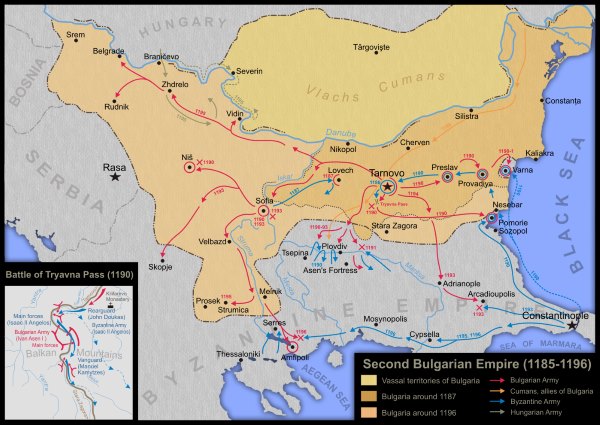
The Uprising of Ivan and Peter Asen was a Bulgarian and Vlach rebellion in the late 12th century against the Byzantine Empire. It began with a tax increase ordered by Emperor Isaac II Angelus for his wedding and culminated with the creation of the Second Bulgarian Empire. Two Valachian brothers named Ivan Asen and Peter Asen were sent to negotiate with the emperor. They asked to be enrolled in the Byzantine army, alongside a retinue of soldiers, and be granted a small estate in the Balkan Mountains as a means of paying for the additional taxes. Being denied and insulted, the brothers threatened to revolt.
After returning home and convincing their fellow countrymen, Ivan and Peter started their uprising on October 26, 1185. They attacked Byzantine settlements and even sacked the old Bulgarian capital of Preslav. Early next year, Emperor Isaac initiated his counter-attack and managed to push the rebels north of the Danube River. Here, the two brothers and their armies came in contact with the north Danubian Vlachs and Cumans who agreed to join the fight.
Employing guerrilla tactics, the rebels managed to ambush the Byzantines on several occasions. Also busy with other rebellions, the Empire couldn’t dedicate its full attention to the Vlachs and Bulgars who were able to consolidate large areas north of the Balkan Mountains. By 1187, Emperor Isaac was forced to sign a truce, recognizing the brothers’ rule over the conquered territory, and the restoration of the Bulgarian Empire.
1.Portuguese Restoration War (1640-1668)
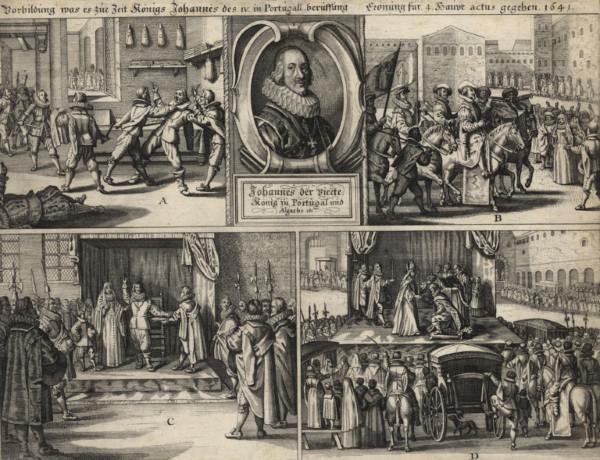
The death of Portugal’s King Sebastian in 1578 during the Battle of the Three Kings left the throne without an heir, and King Philip III of Spain wasted no time stepping in. He claimed the Portuguese crown, creating the Iberian Union—a political alliance that lasted from 1580 to 1640. For the first few decades, things seemed relatively stable. The union coincided with a boom in trade, particularly in Brazil and South America, which brought wealth and prosperity to the region. But after 1620, the situation began to unravel.
High taxes and the Dutch invasion of Portuguese territories in northeastern Brazil and West Africa plunged Portugal into economic hardship. To make matters worse, Spain did little to defend Portugal’s overseas interests, leaving the Portuguese feeling neglected and exploited. Resentment grew, and by 1640, the people had had enough.
On December 1 of that year, a group known as the Forty Conspirators took action. They assassinated the Secretary of State, arrested Margaret of Savoy (the Spanish king’s cousin who ruled Portugal on his behalf), and declared John IV as the new King of Portugal. It was a bold move, but Spain, already bogged down in the Thirty Years’ War, couldn’t muster the resources to fight back effectively. Instead, they tried to isolate Portugal diplomatically and militarily, but their efforts fell short.
Finally, on February 13, 1668, Spain officially recognized Portugal’s independence and accepted the House of Braganza as its ruling dynasty. It was the end of the Iberian Union and the beginning of a new chapter for Portugal. This story is a reminder of how quickly fortunes can change—and how a determined group of people can reshape history. From trade booms to rebellions, the rise and fall of empires is always full of twists and turns!
























